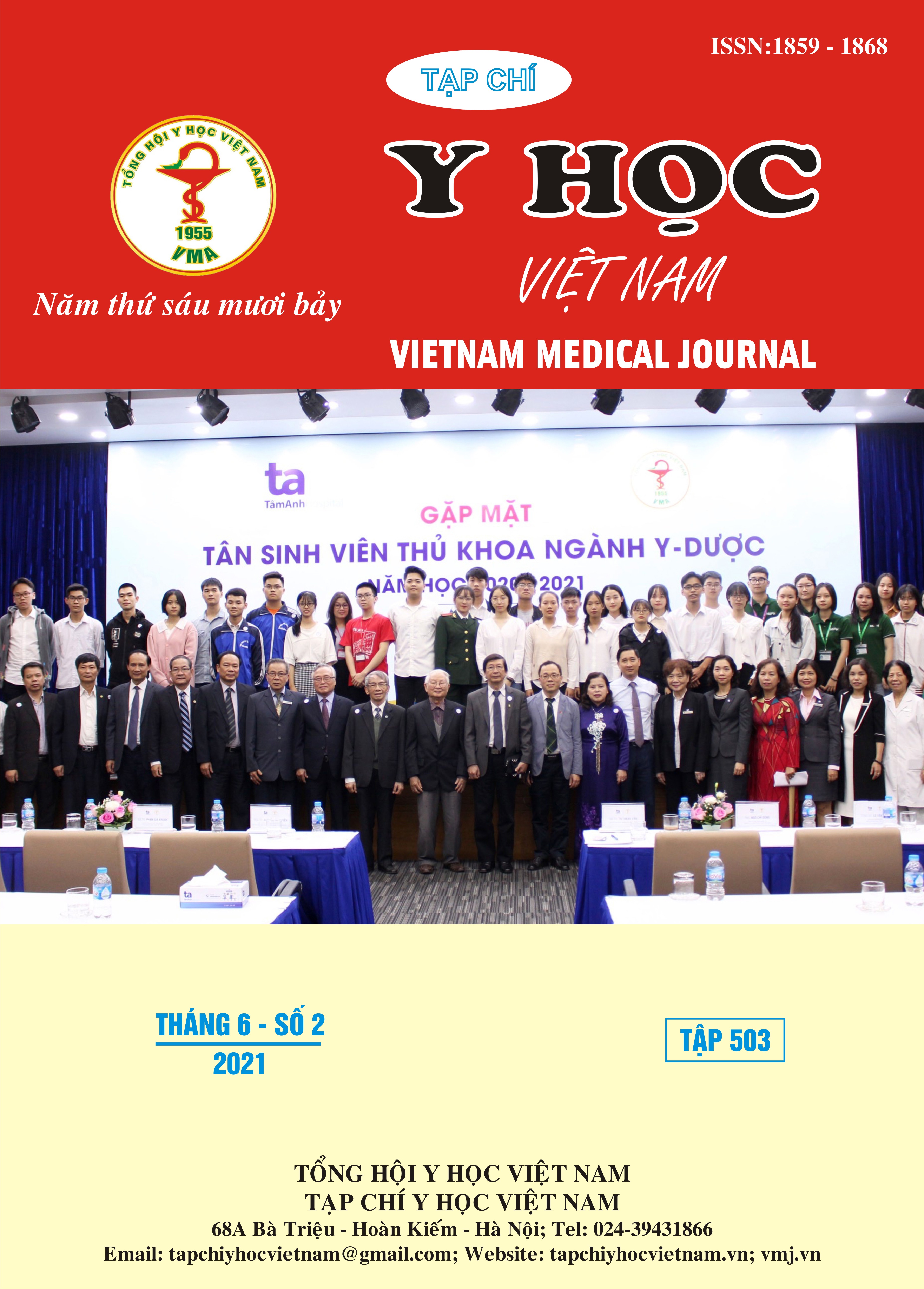THE PREVALENCE OF SCREEN POSITIVE PRE-ECLAMPSIA AND ITS RISK FACTOR AT THAI HOA HOSPITAL
Main Article Content
Abstract
Background: Pre-eclampsia is a multisystem disorder affecting 2%-5% of pregnancies and is associated with multiple maternal and fetal complication. These effects an be altered through predictive models and early disease prevention, will improve pregnancy outcomes. Objective: to investigate the prevalence and relative factors of screen positive pre-eclampsia among pregnancies from Thai Hoa Hospital. Methods: Cross-section study of 230 pregnant women from 11 to 13 weeks 6 days of gestation who have antenatal care at Thai Hoa hospital, Đong Thap from October 2020 to April 2021. All pregnancies have measured value of mean arterial pressure, mean uterine artery PI and. serum PAPP-A was converted into MoM. Model-based estimates of screening performance using Bayes’ theorem which the cut off points is 1/100. Result: Survey of 230 samples has found that rate of screen positive pre-eclampsia is 11.6%. Factors related to screen positive pre-eclampsia were statistically significant such as: systolic blood pressure >128mmHg in the first trimester in the first trimester (PR=7.4; CI 95%: 1.6-34.2) and diastolic pressure > 79 mm Hg (PR=8.5; CI 95%: 2.6- 28.4) Conclusion: routine pre-eclampsia risk screening by FMF Bayes algorithm for all pregnance who come to the clinic at 11 -13 weeks and 6 days of gestation, from which a management plan and daily prophylaxis with low-dose aspirin beginning after the first trimester.
Article Details
Keywords
Pre-eclampsia, mean arterial pressure, mean uterine artery PI (UtA)
References
2. Cao Ngọc Thành, Võ văn Đức, Nguyễn Vũ Quốc Huy (2015). "Mô hình sàng lọc bệnh lý tiền sản giật tại thời điểm 11 tuần đến 13 tuần 6 ngày thai kỳ dựa vào các yếu tố nguy cơ mẹ, huyết áp động mạch trung bình, PAPP-A và siêu âm doppler động mạch tử cung". Tạp chí phụ sản, 13 ( 3), tr. 38-46.
3. Nguyễn Bích Chi (2020). "Tỷ lệ dự đoán nguy cơ cao tiền sản giật trên thai phụ 11 tuần đến 13 tuần 6 ngày tại Trung Tâm Y học di truyền sinh học phân tử miền nam". Luận án chuyên khoa II chuyên ngành Sản phụ khoa- ĐH Y Dược Tp Hồ Chí Minh, Đại học y Dược TP.HCM.
4. Trần Mạnh Linh (2020). "Nghiên cứu kết quả sàng lọc bệnh lý tiền sản giật- sản giật bằng xét nghiệm PAPP- A, siêu âm doppler động mạch tử cung và hiệu quả điều trị dự phòng, Đại học y Dược Huế, tr.84-119.
5. Duckitt K., Harrington D. (2005). "Risk factors for pre-eclampsia at antenatal booking: systematic review of controlled studies". Bmj, 330 (7491), pp. 565
6. Poon L. C., Rolnik D. L., Tan M. Y., et al. (2018). "ASPRE trial: incidence of preterm pre-eclampsia in patients fulfilling ACOG and NICE criteria according to risk by FMF algorithm". Ultrasound Obstet Gynecol, 51 (6), pp. 738-742.
7. Roberge S., Bujold E., Nicolaides K. H. (2018). "Aspirin for the prevention of preterm and term preeclampsia: systematic review and metaanalysis". Am J Obstet Gynecol, 218 (3), pp. 287-293.
8. Tan M. Y., Syngelaki A., Poon L. C., et al. (2018). "Screening for pre-eclampsia by maternal factors and biomarkers at 11-13 weeks' gestation". Ultrasound Obstet Gynecol, 52 (2), pp. 186-195


